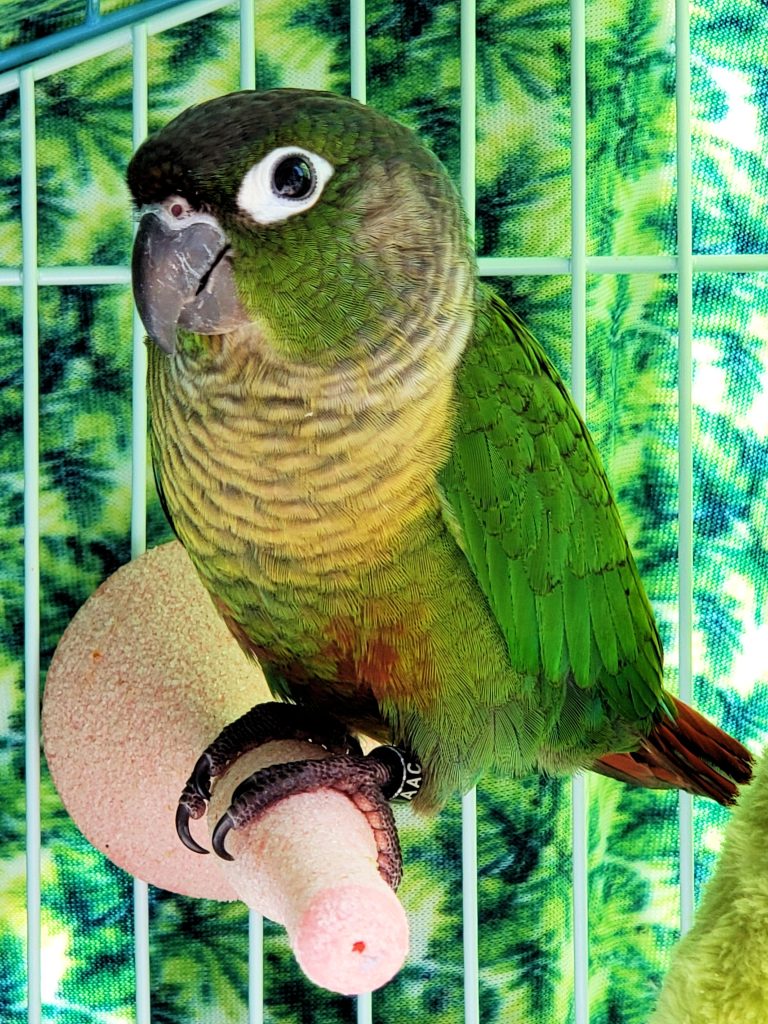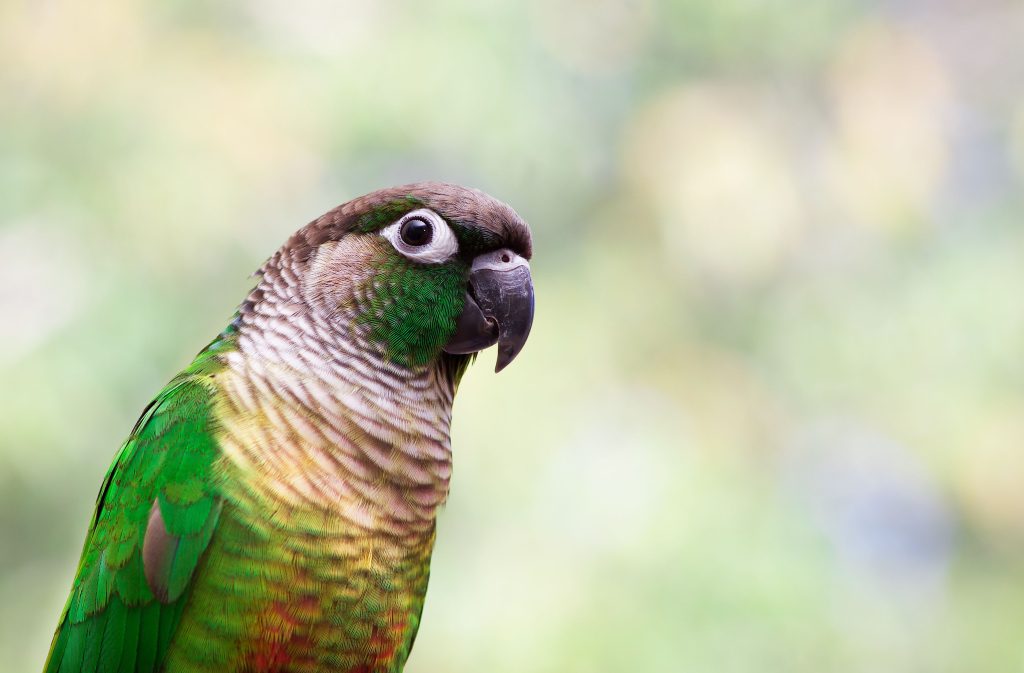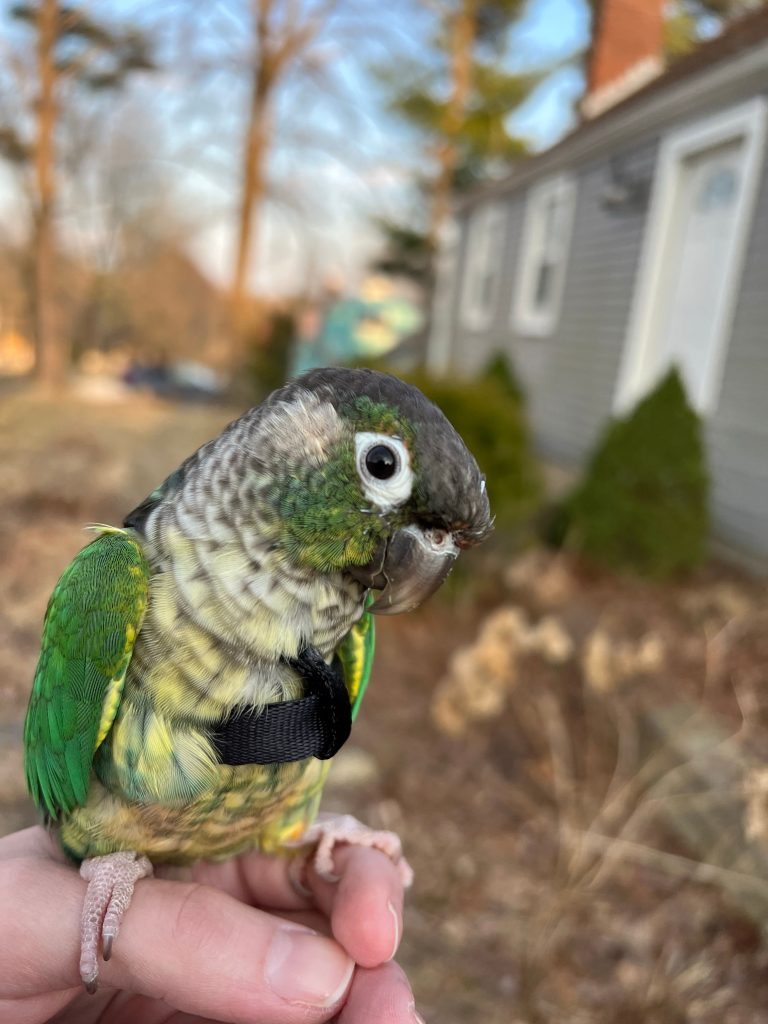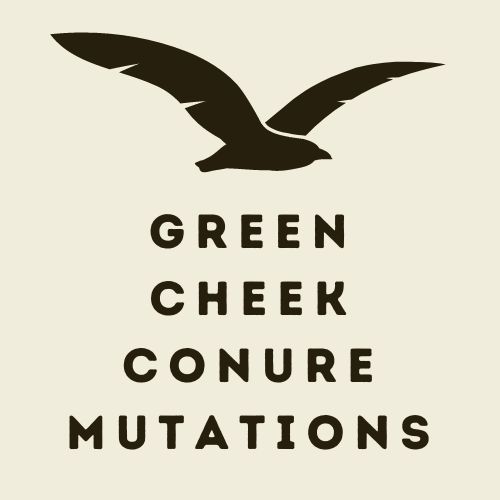Green cheek conures are renowned for their vibrant plumage, playful personalities, and charming antics. Among avian enthusiasts, these small parrots hold a special place in their hearts. However, within the world of green cheek conures lies a fascinating realm of genetic diversity and variation known as mutations. In this article, we delve into the captivating world of green cheek conure mutations, exploring their beauty, breeding practices, and the allure they bring to aviculture.

Understanding Green Cheek Conure Mutations
At the heart of the green cheek conure’s allure lies its captivating mutations. These mutations result from genetic variations that manifest in unique physical traits, altering the bird’s appearance from the standard wild-type. Green cheek conures exhibit various mutations, each adding a distinct touch of beauty to these already enchanting creatures. From subtle shifts in color to striking patterns and markings, mutations offer a glimpse into the endless possibilities of nature’s creativity.
Exploring Green Cheeked Conure Mutations
Among the myriad of green cheek conure mutations, one can find a diverse array of colors and patterns. The classic green cheek conure sports vibrant hues of green, red, and blue, accentuated by a playful personality. However, mutations introduce a kaleidoscope of new colors and patterns into the mix. Variations such as cinnamon, turquoise, pineapple, and yellow-sided mutations offer a spectrum of hues that captivate the eye and stir the imagination.

Breeding green cheek conure mutations requires careful planning and expertise. Aviculturists meticulously pair birds to preserve desired traits and enhance genetic diversity. Through selective breeding, they aim to produce offspring that exhibit the desired mutation while maintaining the bird’s health and vitality. Additionally, breeders utilize genetic testing to identify carriers of specific mutations, ensuring the integrity of their breeding programs.
The Beauty of Green Cheek Conure Color Mutations
A cornerstone of understanding green cheek conure mutations lies in the exploration of their color variations. A green cheek conure color mutations chart serves as a visual guide, showcasing the spectrum of hues and patterns that arise from genetic variation. From the vibrant yellows of the Lutino mutation to the rich blues of the turquoise mutation, each color mutation adds a unique touch of beauty to these charismatic birds.
Breeding Green Cheek Conure Mutations: A Labor of Love
Breeding green cheek conure mutations requires dedication, patience, and a deep understanding of avian genetics. Breeders meticulously pair birds to capitalize on desirable traits while minimizing the risk of genetic disorders. By adhering to ethical breeding practices and prioritizing the health and well-being of the birds, breeders contribute to the preservation and propagation of these stunning mutations.

Unlocking Hidden Beauty: The Lutino Mutation
Among the finest and most recent mutations of the green cheeked conure is the Lutino. This captivating mutation results in a bird with stunning yellow plumage and striking red eyes. The Lutino mutation exemplifies the beauty and diversity inherent in green cheek conure mutations, captivating enthusiasts with its radiant coloration and charming personality.
Read Also: Mint Green Cheek Conures
Conclusion
In the world of aviculture, green cheek conure mutations stand as a testament to the boundless beauty and diversity of nature. From subtle shifts in color to striking patterns and markings, mutations unlock hidden beauty within these charming birds. Through careful breeding practices and a deep appreciation for genetic diversity, enthusiasts continue to explore the captivating realm of green cheek conure mutations, enriching the avicultural landscape with their vibrant hues and playful personalities.
For further exploration of green cheeked conure mutations, you can visit One of the finest and most recent mutations of the Green Cheeked Conure: the Lutino.
In conclusion, green cheek conure mutations offer a glimpse into the endless possibilities of nature’s creativity, enriching the lives of avian enthusiasts and fostering a deeper appreciation for these charismatic birds.
FAQ’s
1. What are green cheek conure mutations?
- Green cheek conure mutations refer to genetic variations that result in unique physical traits, such as changes in color, pattern, or markings, in green cheek conures.
2. How do breeders achieve green cheek conure mutations?
- Breeders achieve green cheek conure mutations through selective breeding, where they pair birds with desired traits to produce offspring with specific mutations. They may also utilize genetic testing to identify carriers of mutations.
3. What are some common green cheek conure mutations?
- Common cheek conure mutations include cinnamon, turquoise, pineapple, yellow-sided, and Lutino mutations. Each mutation introduces distinct colors and patterns to the bird’s plumage.
4. How do green cheek conure mutations contribute to aviculture?
- Green cheek conure mutations enrich aviculture by adding diversity and beauty to the captive bird population. Enthusiasts are drawn to these mutations for their unique appearance and charming personalities, contributing to the popularity of green cheek conures as pets.
5. Are there any health considerations associated with breeding green cheek conure mutations?
- While breeding green cheek conure mutation, it’s essential for breeders to prioritize the health and well-being of the birds. Responsible breeding practices and regular health checks help mitigate the risk of genetic disorders and ensure the long-term welfare of the birds.
